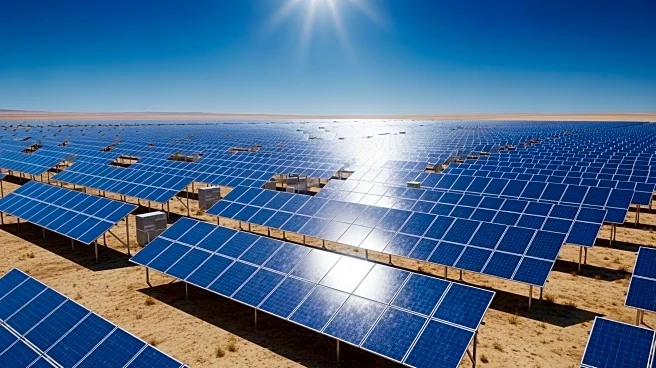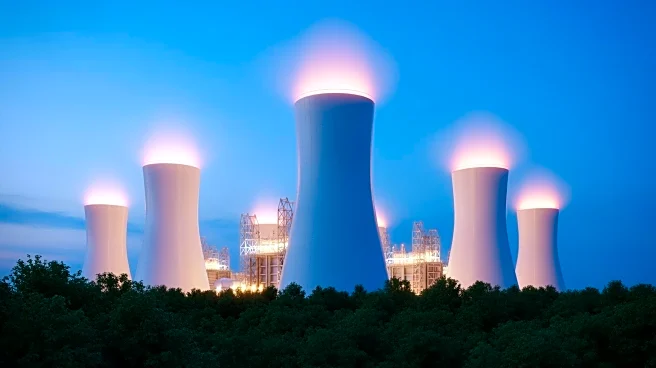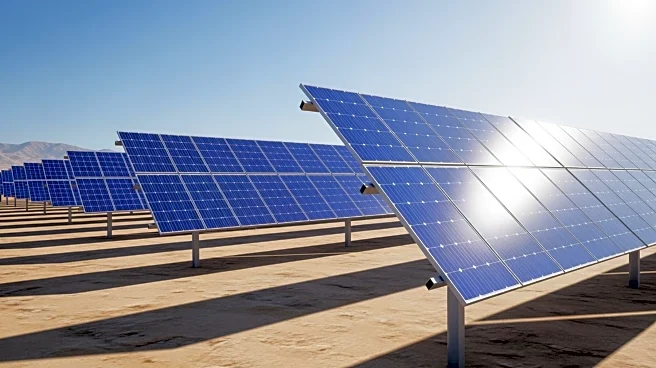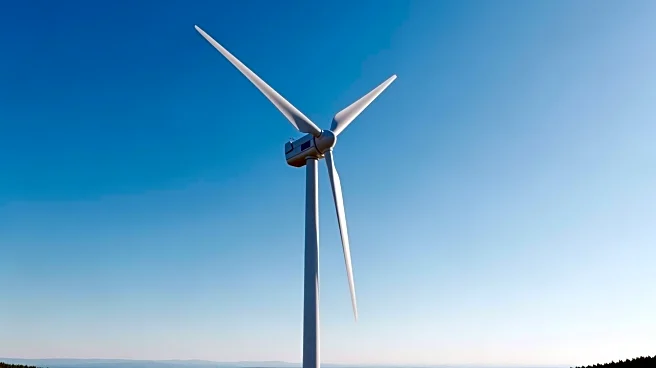What's Happening?
The electric power generation, transmission, and distribution market is projected to reach $6.6 trillion by 2029, according to The Business Research Company. This growth is driven by the transition to renewable
energy, decentralization, and the integration of distributed energy resources. The market is expected to grow at a compound annual rate of 5.7%, with significant contributions from advancements in grid modernization and digitalization. The Asia-Pacific region currently leads the market, benefiting from fossil fuel-based generation, industrialization, population growth, and technological breakthroughs in power generation.
Why It's Important?
The projected growth of the electric power market underscores the increasing global shift towards renewable energy and sustainable practices. This transition is crucial for reducing carbon emissions and combating climate change. The expansion of the market will likely lead to increased investments in smart grids, microgrids, and energy storage solutions, enhancing grid resilience and security. Stakeholders in the energy sector, including utility companies and technology providers, stand to benefit from these developments, while industries reliant on fossil fuels may face challenges in adapting to the new energy landscape.
What's Next?
As the market evolves, stakeholders will need to focus on implementing smart grid technologies and enhancing grid resilience. The electrification of transportation and the use of hydrogen as an energy carrier are expected to gain traction. Companies will likely invest in digital tools and process optimization to meet regulatory expectations and sustainability objectives. The ongoing modernization of the grid will require collaboration between governments, energy providers, and technology firms to ensure a smooth transition to a more sustainable energy future.
Beyond the Headlines
The shift towards renewable energy and grid modernization may have broader implications for global energy policies and economic strategies. Countries may need to reassess their energy dependencies and invest in infrastructure that supports sustainable growth. The integration of digital technologies in energy systems could lead to new business models and opportunities for innovation, potentially reshaping the energy sector's landscape.











